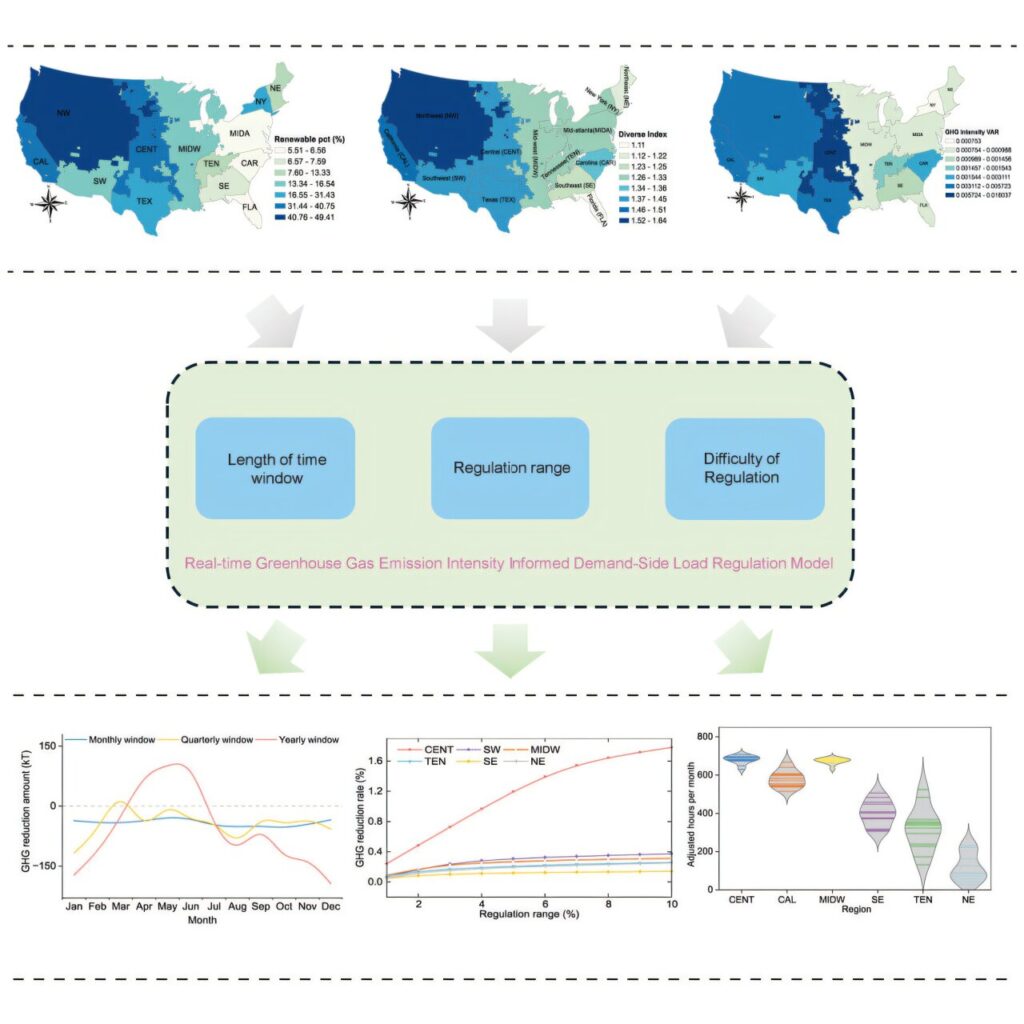Shifting electricity consumption to times when the grid has a greater supply from alternative energy sources could help reduce carbon dioxide emissions significantly, according to a new University of Texas at Dallas study.
UT Dallas engineers, who collaborated with researchers from Harvard University and Nantum AI, developed a new model that optimizes the timing of electricity use based on an energy grid’s availability of alternative energy sources to achieve greater reductions in carbon emissions, which are a subset of greenhouse gas emissions. The study was published in the May 23 issue of the journal Cell Reports Sustainability.
“When we leverage real-time data on greenhouse gas emissions, we are able to provide information that utilities and consumers could use to make better decisions about electricity consumption to reduce emissions,” said Dr. Jie Zhang, associate professor of mechanical engineering in the Erik Jonsson School of Engineering and Computer Science. Zhang, corresponding author of the paper, studies ways to optimize energy use to make energy systems more resilient and reliable.
Electricity grids across the United States rely on a mix of power sources, including wind, solar, hydro, nuclear, natural gas and coal. Each of these sources’ contributions to a particular grid—an interconnected network that generates, transmits and distributes electricity from power plants to consumers—fluctuates based on factors such as the time of day, season, weather conditions and geography. For example, in the Northwest, hydropower comprises about 30% of that region’s source of electricity, according to the study.
Grids typically first draw from alternative energy sources, which have no carbon emissions, before moving to other sources such as natural gas and coal to meet electricity demands, Zhang said.
The researchers found that by aligning electricity use with times when the grid is supplied with higher amounts of alternative energy sources, consumers could use the same amount of electricity without increasing carbon emissions. For example, consumers could help to reduce carbon emissions by using their washing machines in the evening, when the grid may get more of its power from wind energy, instead of the afternoon, when the grid faces peak demand and taps into fossil fuel sources for power.
“If you shift your laundry time from peak load to off-peak load times, you help the grid in many ways and reduce greenhouse emissions,” Zhang said.
While efforts to reduce carbon emissions often focus on increasing the supply of alternative energy sources, the study demonstrates that making changes on the demand side can also make a significant contribution.
The researchers developed models to study three different scenarios based on different regions of the U.S. that vary in the mix of sources that power their electricity grids. Regions with abundant renewable energy showed the most potential for reducing carbon emissions.
The study demonstrated that providers that incorporate electricity supply and consumption patterns over a year, rather than shorter periods of time, in their planning can achieve greater reductions in carbon emissions.
California, for example, could achieve up to 33% greater carbon-emission reductions by incorporating the annual optimization approach. That means if the state cut carbon emissions by 10%, using the model could boost that reduction to more than 13%. The number is based on consumers shifting 5% of their electricity use to lower greenhouse gas intensity times.
Zhang said that implementing the emissions-reduction model would require utilities to communicate to their customers the time slots when electricity is being generated primarily by alternative energy sources.
Other UT Dallas researchers who contributed to the study include first author Honglin Li, a doctoral student in mechanical engineering, and Soroush Senemmar Ph.D.”24.
More information:
Honglin Li et al, Real-time greenhouse gas emission intensity informed demand-side load regulation for power grid decarbonization, Cell Reports Sustainability (2025). DOI: 10.1016/j.crsus.2025.100367
Citation:
Study identifies best times to consume electricity and cut carbon emissions (2025, August 15)
retrieved 16 August 2025
from https://techxplore.com/news/2025-08-consume-electricity-carbon-emissions.html
This document is subject to copyright. Apart from any fair dealing for the purpose of private study or research, no
part may be reproduced without the written permission. The content is provided for information purposes only.

